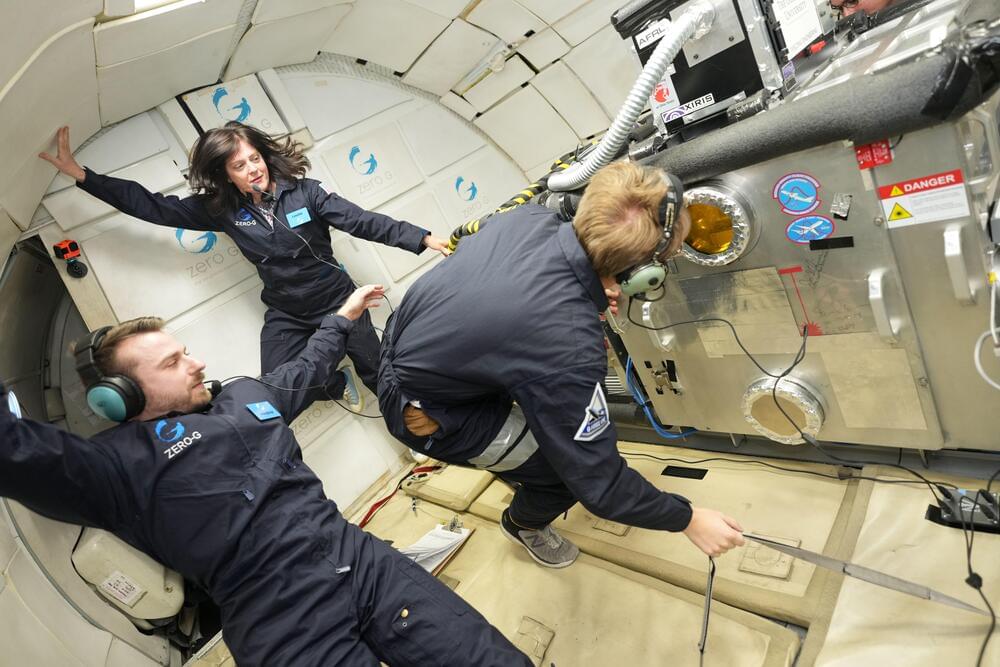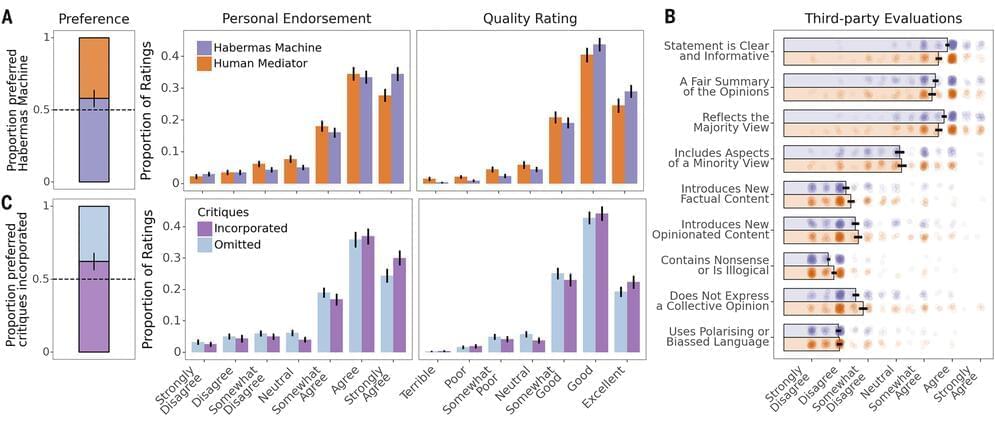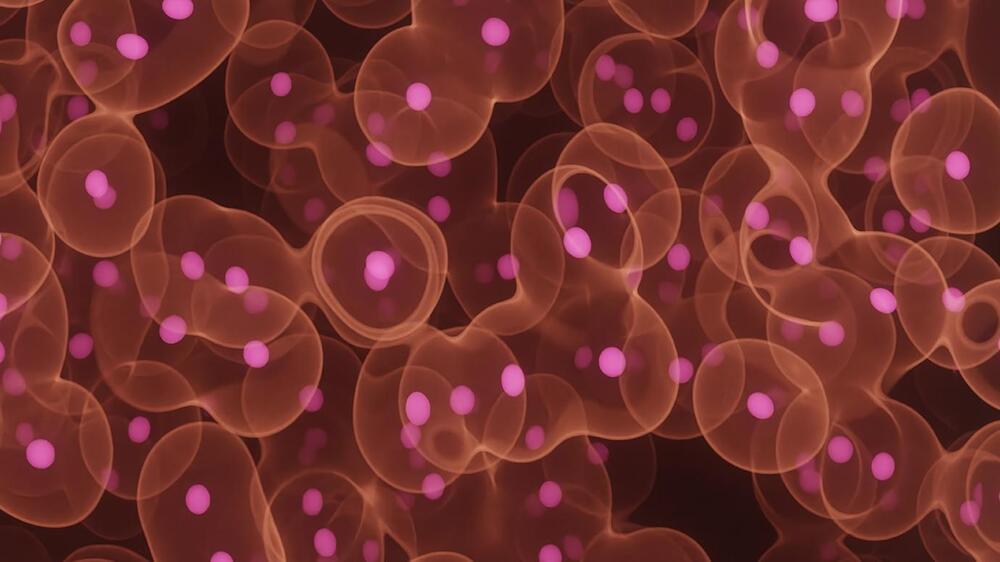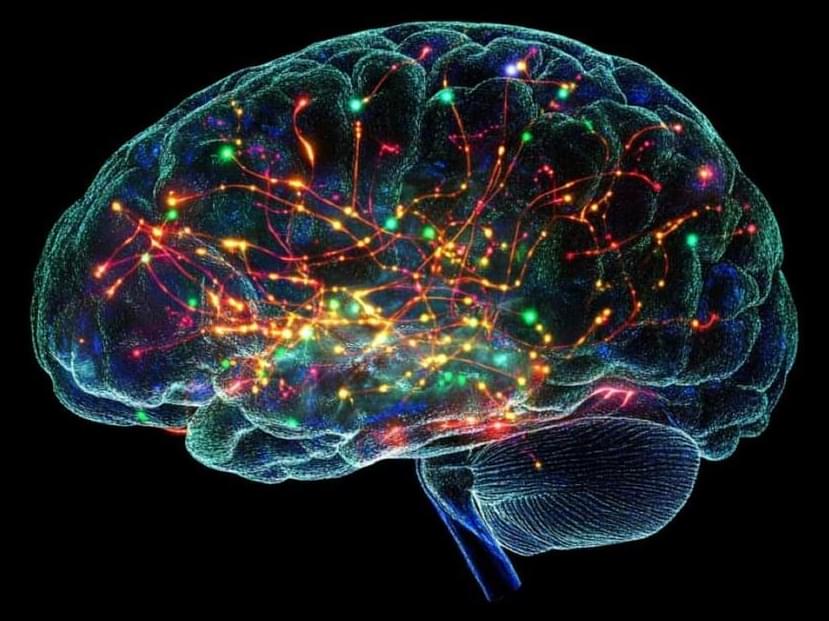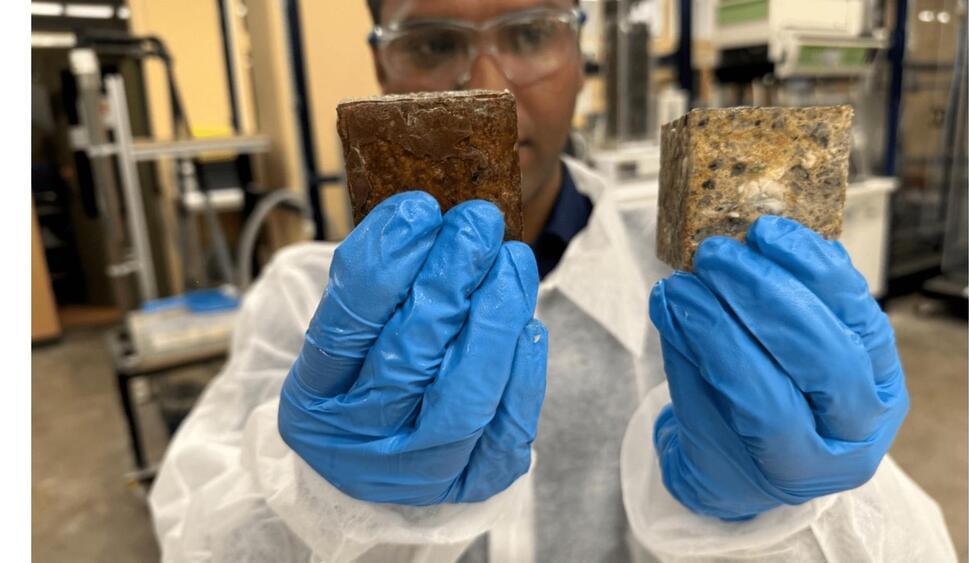As NASA plans for humans to return to the Moon and eventually explore Mars, a laser beam welding collaboration between NASA’s Marshall Space Flight Center in Huntsville, Alabama, and The Ohio State University in Columbus aims to stimulate in-space manufacturing.
A team of AI researchers with Google’s DeepMind London group has found that certain large language models (LLMs) can serve as effective mediators between groups of people with differing viewpoints regarding a given topic. The work is published in the journal Science.
Over the past several decades, political divides have become common in many countries—most have been labeled as either liberal or conservative. The advent of the internet has served as fuel, allowing people from either side to promote their opinions to a wide audience, generating anger and frustration. Unfortunately, no tools have surfaced to diffuse the tension of such a political climate. In this new effort, the team at DeepMind suggests AI tools such as LLMs may fill that gap.
To find out if LLMs could serve as effective mediators, the researchers trained LLMs called Habermas Machines (HMs) to serve as caucus mediators. As part of their training, the LLMs were taught to identify areas of overlap between viewpoints of people in opposing groups—but not to try to change anyone’s opinions.
As Canadians brace for “vitamin D winter”—months when the sun’s angle is too low to produce the vitamin in the skin—a McGill University study explains why vitamin D deficiency early in life is associated with a higher risk of autoimmune diseases.
During childhood, the thymus helps train immune cells to distinguish between the body’s own tissues and harmful invaders. A vitamin D deficiency at that stage of life causes the thymus to age more quickly, the researchers discovered.
The study is published in the journal Science Advances.
It’s the easiest way yet for iOS users to use Google’s AI, and it comes with Gemini Live.
Researchers at the University of Chicago Medicine Comprehensive Cancer Center have developed a nanomedicine that increases the penetration and accumulation of chemotherapy drugs in tumor tissues and effectively kills cancer cells in mice.
The study, published in Science Advances, addresses a…
Research effectively used nanoparticles to deliver chemo drugs directly to tumors in mice.
Summary: Male worms can activate two conflicting memories—mating and starvation—when encountering the same odor, but only one influences their behavior. A study conditioned worms to associate the smell with both positive (mating) and negative (starvation) experiences, revealing that mating associations overrode avoidance behavior.
This flexible memory processing highlights how the brain prioritizes rewards over punishment under certain conditions. The findings provide insights into memory-driven behavior and offer a model for studying maladaptive processes in disorders like PTSD.
Scientists have found that a process called neurotransmitter switching—where neurons alter their chemical signals—plays a role in the development of autism-related traits.
China’s latest weapon, unveiled during an air show in Zhuhai, could be a game-changer during possible future conflicts with rival powers.
China is making advancements in its multiple military-related technologies that will give it an edge over its adversaries during a possible conflict in the future. During a recent giant air show in Zhuhai, Beijing unveiled multiple game-changer military technologies, including a mobile air defense weapons system.
Called FK-4000, the mobile air defense weapons system is reportedly capable of intercepting the smallest, lightest drones using its high-power microwaves (HPM).
Debuted by China Aerospace Science and Technology Corporation, the weapon can deliver microwave blasts in less than a second from a distance of almost 2 miles.
Fatbergs threaten sewers, but RMIT engineers have created a protective concrete coating to tackle the issue.
This results in severe sewer blockages, with data indicating that half of all blockages occur in the United States and 40% in Australia.
The annual cost of maintenance and rehabilitation for these blockages is estimated at US$25 billion in the United States and A$100 million in Australia.
To tackle this problem, the researchers have developed zinc-enhanced polyurethane coating.
Could AGI be here by 2025? In a shocking new interview, Sam Altman — OpenAI’s CEO — just dropped some MAJOR revelations about their path to artificial general intelligence.
Unlike his usual careful corporate speak, Sam appears surprisingly confident about what’s ahead.
In this video, I break down Sam’s latest statements, OpenAI’s five-level roadmap to AGI, and why this matters for YOU.
After working full-time in AI since January 2023 and studying these developments closely, I’ll give you my analysis on:
-Why Sam’s recent statements are different from his past comments.
–OpenAI’s five levels toward AGI and where we actually are.
–What this means for the economy, jobs, and your future.
–How you can prepare and position yourself NOW
The world is still sleeping on what’s coming. Whether AGI arrives in 2025 or later, one thing is clear — the pace of change is rapidly accelerating, and the opportunities are massive for those who prepare.
